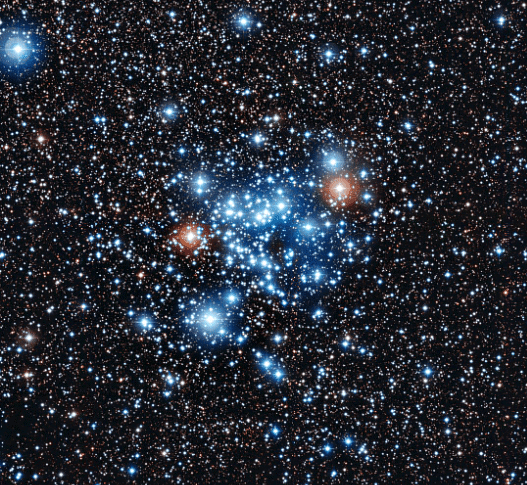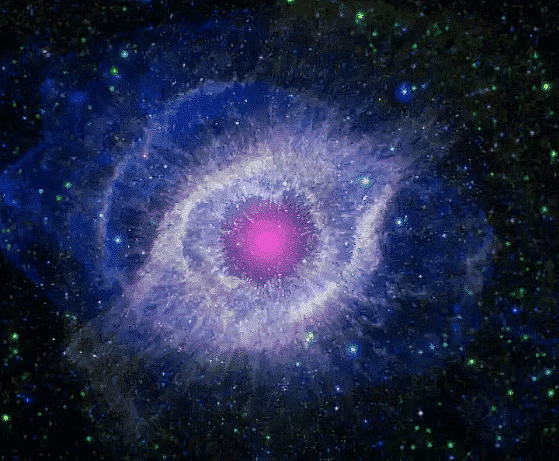Best Study Material for ACT Exam
ACT Exam > ACT Notes > Science for ACT > Basics of Stars
Basics of Stars | Science for ACT PDF Download
Birth
- Stars emerge from vast expanses of gas and dust known as molecular clouds. These clouds, with masses ranging from 1,000 to 10 million times that of the Sun and stretching across hundreds of light-years, serve as the cradles of stellar birth. Molecular clouds, characterized by their cold temperatures, prompt the aggregation of gas, resulting in the formation of dense regions. Within these regions, gas clumps collide and accumulate matter, bolstering their gravitational influence as they grow in mass.
- Eventually, gravitational forces cause some of these clumps to collapse. During this process, friction generates heat within the material, initiating the transformation into a protostar—essentially, the infancy stage of a star. Assemblages of recently formed stars stemming from molecular clouds are often referred to as stellar clusters, while molecular clouds teeming with such clusters are aptly termed stellar nurseries.

Existence
- Initially, the primary energy source for the protostar originates from the heat liberated during its initial collapse. Over millions of years, as pressures and temperatures within the star's core reach staggering levels, hydrogen nuclei undergo fusion to produce helium—a phenomenon known as nuclear fusion. This fusion process yields energy, which in turn raises the temperature of the star, counteracting the gravitational force that would otherwise cause it to continue collapsing.
- Astronomers classify stars that are steadily engaged in the nuclear fusion process of hydrogen into helium as main sequence stars. This phase represents the most extended period in a star's lifecycle. Throughout this phase, which spans millions or even billions of years, the star's luminosity, size, and temperature gradually evolve. Our Sun, for instance, finds itself approximately halfway through this main sequence stage.
- A star's gas reservoir serves as its fuel, and its mass dictates the pace at which it exhausts this supply. Lower-mass stars burn their fuel more slowly, resulting in longer lifespans, dimmer luminosity, and cooler temperatures compared to their more massive counterparts. Conversely, more massive stars must consume fuel at a heightened rate to counterbalance the gravitational forces attempting to compress them. Consequently, while some low-mass stars can radiate light for trillions of years—outlasting the current age of the universe—some high-mass stars may endure for only a few million years.

Death
- As a star approaches the twilight of its existence, its core exhausts its hydrogen fuel for converting into helium. Fusion-generated energy counteracts gravity's pull, maintaining a delicate balance within the star. However, as the core depletes, gravitational forces initiate its collapse, simultaneously elevating temperature and pressure, causing the star to expand gradually.
- The subsequent stages of a star's demise are heavily contingent upon its mass. In the case of a low-mass star, its atmosphere undergoes expansion, transforming it into a subgiant or giant star as helium fuses into carbon within the core. Our Sun is destined to follow this path over billions of years. Some giants experience instability, pulsating intermittently as they inflate and shed portions of their atmospheres. Ultimately, the star sheds its outer layers, forming an expansive cloud of dust and gas known as a planetary nebula. All that remains is the core, now termed a white dwarf—a compact stellar remnant roughly the size of Earth—that gradually cools over eons.
- Conversely, high-mass stars undergo further transformations. Fusion progresses, converting carbon into heavier elements like oxygen, neon, and magnesium, which will serve as future fuel for the core. For the most massive stars, this cycle persists until silicon fuses into iron. While these fusion processes generate energy, each successive fuel source provides diminishing reprieves. The entire sequence unfolds swiftly, spanning just a few million years. Upon silicon fusion, the star rapidly depletes its reserves, leading to a fuel exhaustion crisis within days. The prospect of fusing iron into heavier elements emerges, but this process demands energy rather than releasing it, marking a decisive shift in the star's fate.
- Following the collapse of the star's iron core, forces between the nuclei momentarily halt the process before it rebounds. This sudden reversal generates a shock wave that propagates outward through the star, culminating in a colossal explosion known as a supernova. The surviving core persists as an extraordinarily dense remnant, potentially manifesting as either a neutron star or a black hole.
- Substances ejected into the cosmos during supernovae and similar stellar phenomena will contribute to enriching future molecular clouds, ultimately becoming integrated into subsequent generations of stars.
The document Basics of Stars | Science for ACT is a part of the ACT Course Science for ACT.
All you need of ACT at this link: ACT
|
486 videos|517 docs|337 tests
|
FAQs on Basics of Stars - Science for ACT
| 1. How are stars formed? |  |
| 2. What determines the lifespan of a star? |  |
Ans. The lifespan of a star is primarily determined by its mass. The more massive a star is, the shorter its lifespan will be. Smaller stars like our sun have longer lifespans compared to massive stars.
| 3. How do stars die? |  |
Ans. Stars can die in different ways depending on their mass. Small to medium-sized stars like our sun end their lives by becoming a white dwarf, while massive stars go through supernova explosions and can collapse into black holes or neutron stars.
| 4. What role does nuclear fusion play in the life of a star? |  |
Ans. Nuclear fusion is the process by which stars generate energy. It occurs in the core of a star where hydrogen atoms fuse together to form helium, releasing a tremendous amount of energy in the process.
| 5. Can stars be reborn after they die? |  |
Ans. While stars cannot be reborn in the same way that living beings are, the material released during a star's death can contribute to the formation of new stars and planetary systems in the universe.
Related Searches



















